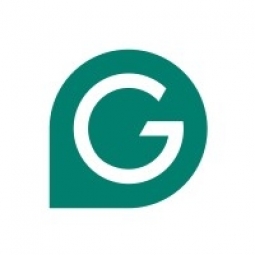Technology Category
- Analytics & Modeling - Process Analytics
- Networks & Connectivity - 5G
Applicable Industries
- Equipment & Machinery
- Telecommunications
Applicable Functions
- Quality Assurance
- Sales & Marketing
Use Cases
- Time Sensitive Networking
- Visual Quality Detection
Services
- Testing & Certification
About The Customer
The customer in this case study is a global Business Process Outsourcing (BPO) company with 19 locations. The company serves a wide range of industries, including finance, telecommunications, and delivery retailers. It handles a high volume of support requests daily across various channels and serves 5 million client customers. The company was facing challenges in improving the quality of its customer service due to issues with communication quality, especially as many of its agents were non-native English speakers. The company was also dealing with unhappy clients and penalties due to these issues.
The Challenge
A global Business Process Outsourcing (BPO) company, serving a wide range of industries from finance to telecommunications, was facing a significant challenge in improving the quality of its customer service. The company was dealing with a high volume of support requests daily across various channels, including live chat and email. However, the quality of communication was a major concern, leading to complaints from clients and their customers. The company was also facing penalties due to unhappy clients. The challenge was further compounded by the fact that many of the customer service agents were non-native English speakers. While they had a good command of English, the lack of appropriate tools and time constraints made it difficult for them to ensure their messages were clear and professional. The company tried using canned responses, but this approach was not effective for complex customer support questions and often made customers feel like they were talking to a robot.
The Solution
The company decided to invest in Grammarly Business as a solution to their communication challenges. The decision was influenced by an individual who had been using Grammarly for personal tasks and saw its potential benefits for the broader team. The company rolled out Grammarly Business to 250 customer support agents. The tool helped the agents to catch spelling mistakes, adjust grammar and syntax, and write in a friendly tone. It also served as a teaching tool, providing guidance on how to fix mistakes, thus saving substantial time for managers who were coaching the agents. The use of Grammarly Business ensured that adjustments to canned responses were clear to customers, thereby improving the quality of communication. The company also emphasized the importance of good grammar for better communication and equipped its team with tools to increase productivity.
Operational Impact
Quantitative Benefit

Case Study missing?
Start adding your own!
Register with your work email and create a new case study profile for your business.
Related Case Studies.

Case Study
Smart Water Filtration Systems
Before working with Ayla Networks, Ozner was already using cloud connectivity to identify and solve water-filtration system malfunctions as well as to monitor filter cartridges for replacements.But, in June 2015, Ozner executives talked with Ayla about how the company might further improve its water systems with IoT technology. They liked what they heard from Ayla, but the executives needed to be sure that Ayla’s Agile IoT Platform provided the security and reliability Ozner required.

Case Study
IoT enabled Fleet Management with MindSphere
In view of growing competition, Gämmerler had a strong need to remain competitive via process optimization, reliability and gentle handling of printed products, even at highest press speeds. In addition, a digitalization initiative also included developing a key differentiation via data-driven services offers.

Case Study
Predictive Maintenance for Industrial Chillers
For global leaders in the industrial chiller manufacturing, reliability of the entire production process is of the utmost importance. Chillers are refrigeration systems that produce ice water to provide cooling for a process or industrial application. One of those leaders sought a way to respond to asset performance issues, even before they occur. The intelligence to guarantee maximum reliability of cooling devices is embedded (pre-alarming). A pre-alarming phase means that the cooling device still works, but symptoms may appear, telling manufacturers that a failure is likely to occur in the near future. Chillers who are not internet connected at that moment, provide little insight in this pre-alarming phase.

Case Study
Premium Appliance Producer Innovates with Internet of Everything
Sub-Zero faced the largest product launch in the company’s history:It wanted to launch 60 new products as scheduled while simultaneously opening a new “greenfield” production facility, yet still adhering to stringent quality requirements and manage issues from new supply-chain partners. A the same time, it wanted to increase staff productivity time and collaboration while reducing travel and costs.

Case Study
Integration of PLC with IoT for Bosch Rexroth
The application arises from the need to monitor and anticipate the problems of one or more machines managed by a PLC. These problems, often resulting from the accumulation over time of small discrepancies, require, when they occur, ex post technical operations maintenance.

Case Study
Data Gathering Solution for Joy Global
Joy Global's existing business processes required customers to work through an unstable legacy system to collect mass volumes of data. With inadequate processes and tools, field level analytics were not sufficient to properly inform business decisions.







